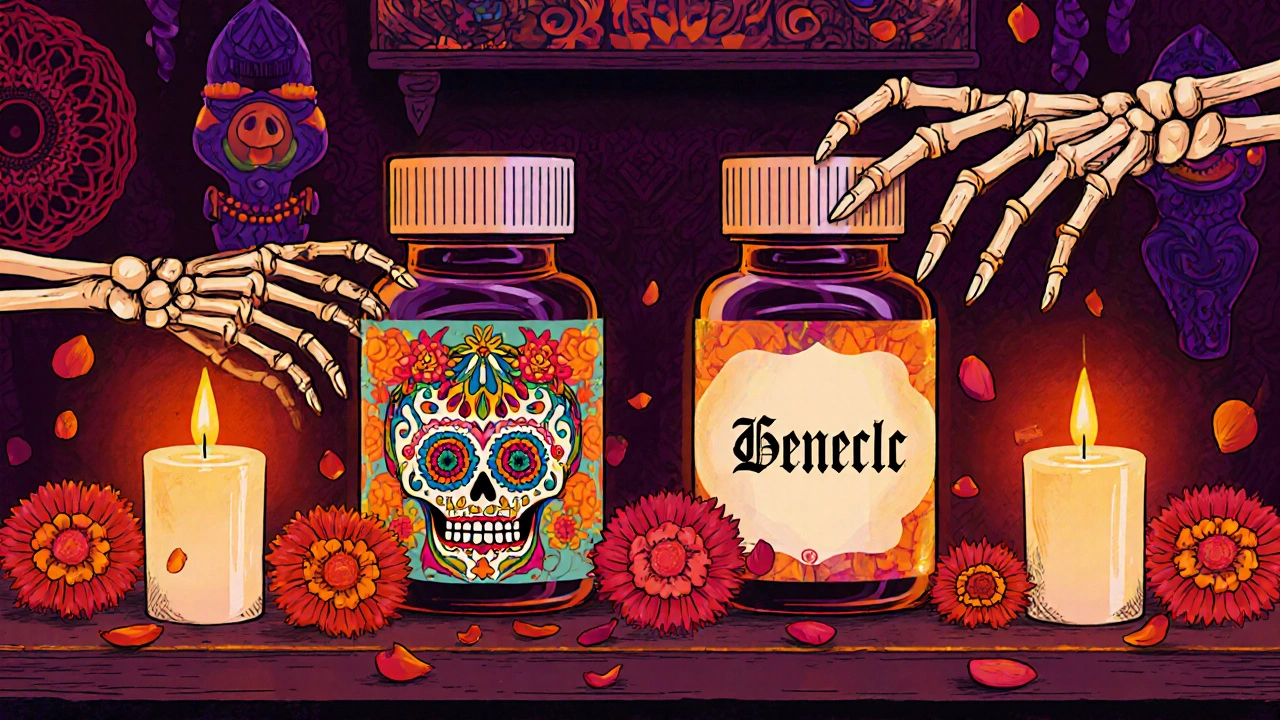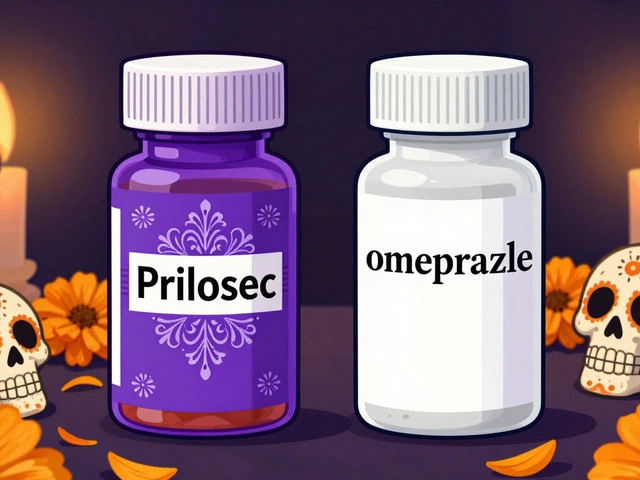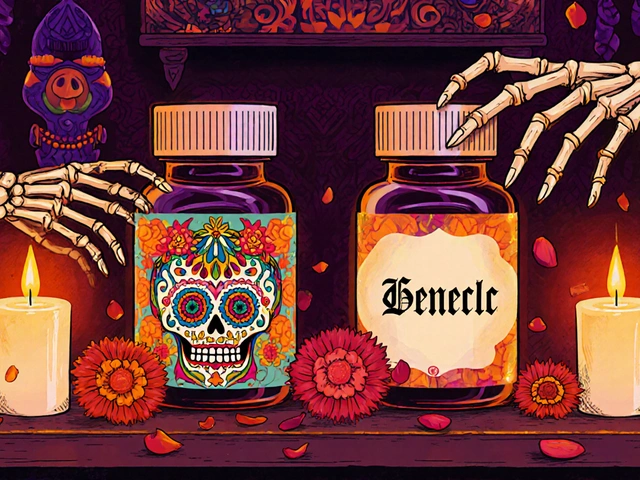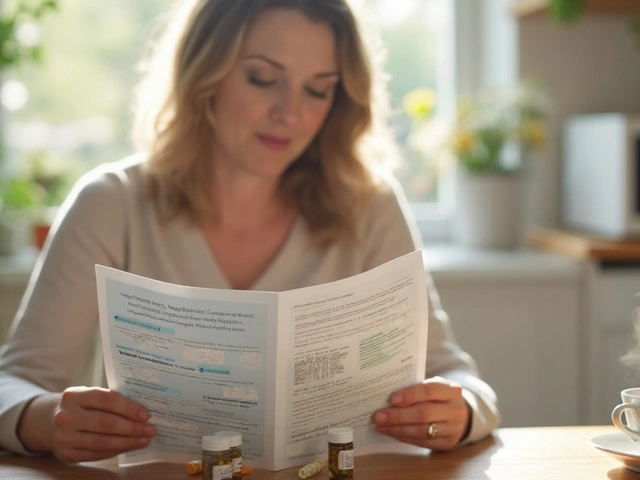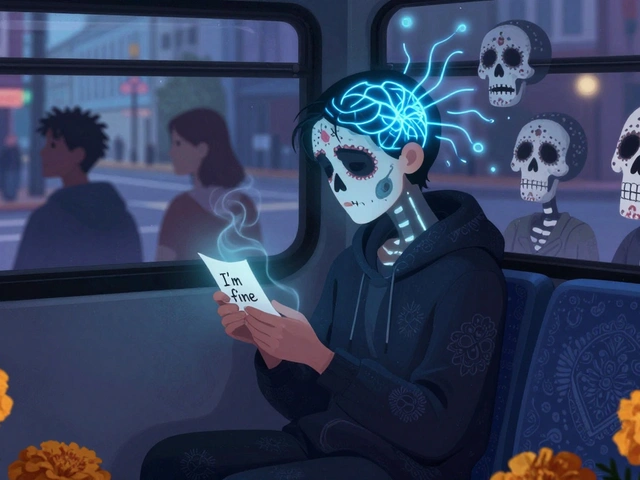When you pick up a prescription, you might see two bottles on the counter that look exactly the same - same color, same shape, same label with the same active ingredient. One says Brand Name, the other says Authorized Generic. The brand version costs $120. The other? $95. Why? It’s the same medicine. Same factory. Same ingredients. So why the price drop?
What Exactly Is an Authorized Generic?
An authorized generic isn’t some knockoff or imitation. It’s the exact same drug as the brand-name version, made by the same company, in the same facility, using the same recipe. The only difference? The label. Instead of the flashy brand name, it has the generic name printed on it. The FDA requires these to meet the same strict standards as the original - no shortcuts, no compromises.
Here’s how it works: When a brand-name drug’s patent is about to expire, the company can choose to launch its own generic version - under a different name - before any other company can. This is called an authorized generic. It’s legal, approved by the FDA, and tracked in their official quarterly list. Think of it like a car manufacturer selling the same model under two different badges: one as a premium brand, the other as a budget version. Same engine. Same safety features. Just a different sticker.
Why Do Authorized Generics Cost Less?
The price difference isn’t about cost of production - it’s about market strategy. Brand-name drugs carry heavy marketing costs: TV ads, doctor visits, patient support programs, fancy packaging. Authorized generics skip all that. No advertising budget. No sales reps knocking on clinic doors. No fancy boxes. That savings gets passed on.
But there’s another reason - competition. When a brand faces a generic competitor, it has two choices: fight or fold. Launching an authorized generic lets the brand stay in the game. Instead of letting one generic company take over the market for six months (thanks to the 180-day exclusivity rule under the Hatch-Waxman Act), the brand introduces its own version. That forces the other generic to lower its price too. The result? Prices drop faster and deeper than they would otherwise.
According to FTC data from 2011 through 2023, when an authorized generic enters the market alongside a traditional generic, retail prices drop by 4% to 8% compared to when only the brand is present. For pharmacies buying in bulk, the discount can be even steeper - up to 18% off the brand price. That’s not a small saving. For a monthly medication like a blood pressure pill or a cholesterol drug, that’s $10 to $30 a month back in your pocket.
How Authorized Generics Change the Market
Before authorized generics, the first generic company to enter the market after patent expiry had a monopoly for half a year. That meant they could charge nearly as much as the brand - sometimes 80% of the original price. That’s not really a discount. That’s a delay.
Authorized generics break that pattern. From day one, there are two versions of the same drug on the shelf. That forces the first generic to compete immediately. In Medicaid data, drugs with an authorized generic saw wholesale prices fall by 13% to 18% faster than those without. That’s not just good for patients - it’s good for insurers and Medicare too.
Take the EpiPen. In 2016, Mylan raised the price from $100 to $600. Public outrage followed. Then they launched an authorized generic - for $300. It wasn’t a charity. It was a move to keep customers from switching to competitors. But it worked. People got a better deal. The brand’s price stayed high, but now there was a real alternative.
Same thing happened with Gilead’s hepatitis C drugs Harvoni and Epclusa. Before their patents even expired, Gilead launched authorized generics. Why? Because they knew cheaper versions were coming. By launching their own, they kept control of the market and avoided a free-for-all price war.

Are Authorized Generics as Safe as Brand Names?
Yes. Absolutely. The FDA doesn’t allow any differences in quality, strength, purity, or performance. The same batch of active ingredient. The same manufacturing line. The same quality control checks. In fact, many authorized generics are made in the same factory as the brand version - sometimes even on the same day. The only thing that changes is the label and the price.
Some patients worry that switching from a brand to a generic might cause side effects. That’s a myth with traditional generics. With authorized generics, it’s even less of a concern. You’re not switching manufacturers. You’re not switching ingredients. You’re just switching the name on the bottle.
Why Aren’t Authorized Generics Always Cheaper at the Pharmacy?
Here’s where things get tricky. Just because an authorized generic is cheaper doesn’t mean you’ll always pay less at the counter. It depends on your pharmacy benefit manager (PBM).
PBMs decide which drugs go on which tier of your insurance plan. If your plan puts the brand and the authorized generic on the same tier, you’ll pay the same copay - even if the authorized generic costs the pharmacy less. But if the PBM puts the authorized generic on a lower tier, you’ll pay less.
Some PBMs actually favor the brand because they get rebates from the manufacturer. That means even though the authorized generic is cheaper, your copay stays high. You need to ask your pharmacist: “Is there an authorized generic for this? And is it on a lower tier?”
A 2022 study of 1.2 million Medicare Part D patients showed that when authorized generics were placed on the same tier as traditional generics, medication adherence improved by over 8%. Why? Because patients could switch without paying more. But that only happened when PBMs made the right choices.

How to Find and Use Authorized Generics
Not every brand has an authorized generic. But many do - especially for high-cost drugs like those for diabetes, heart disease, depression, and asthma.
Here’s how to find one:
- Ask your pharmacist: “Is there an authorized generic for this drug?”
- Check the FDA’s quarterly list of authorized generics - it’s public and updated every three months.
- Use a price comparison app like GoodRx or SingleCare. They often list authorized generics separately and show the lowest price.
- Call your insurance company and ask: “If I switch to the authorized generic, will my copay go down?”
If you’re on Medicare Part D, the Inflation Reduction Act caps your out-of-pocket costs at $2,000 a year. That makes saving on each prescription even more valuable. Every dollar you save on your meds means you’re less likely to hit that cap early.
What About the Controversy?
Not everyone sees authorized generics as a win. Some experts, like Dr. Peter Bach from Memorial Sloan Kettering, worry they’re sometimes used as a tool in patent settlements. If a brand company pays a generic manufacturer to delay entering the market, and then launches its own authorized generic, it’s not really competition - it’s a way to keep prices high while pretending to be fair.
The FTC has looked into this. Their 2011 report found that while authorized generics do lower prices overall, they can also be part of anti-competitive deals. That’s why regulators are watching closely. But even with those concerns, the data shows that when an authorized generic enters the market, prices drop - and patients benefit.
There’s no evidence that authorized generics cost more than other generics in the long run. In fact, they often become the cheapest option after the 180-day exclusivity period ends and more generics flood the market.
Bottom Line: Ask for It
Authorized generics aren’t magic. They’re just smart business. And they’re a real way to save money without sacrificing quality. If you’re paying full price for a brand-name drug, ask if there’s an authorized generic. It might be sitting right next to it on the shelf. And if your pharmacy doesn’t stock it, ask them to order it. Most will.
That $25 you save on your monthly prescription? That’s a lunch out. A gas fill-up. A few extra dollars in your budget. In a world where drug prices keep climbing, authorized generics are one of the few places where the system actually works for you - if you know to ask.
Are authorized generics the same as regular generics?
No. Regular generics are made by different companies after the brand’s patent expires and must go through their own FDA approval process (ANDA). Authorized generics are made by the original brand company or under its direct permission, using the same factory and formula as the brand - just with a different label. They’re identical in every way except the name.
Why don’t pharmacies always offer authorized generics?
It depends on your insurance plan and the pharmacy benefit manager (PBM). Sometimes, the PBM pushes the brand version because they get rebates from the manufacturer. Other times, the pharmacy just doesn’t stock it because they don’t get enough demand. Always ask - if you request it, they’ll usually order it.
Can I switch from a brand to an authorized generic safely?
Yes. Authorized generics are identical to the brand in active ingredient, strength, dosage, and manufacturing. There’s no increased risk of side effects or reduced effectiveness. Many patients switch without even noticing a difference.
Do authorized generics work as well as brand-name drugs?
They work exactly the same. The FDA requires them to be bioequivalent - meaning they deliver the same amount of medicine into your bloodstream at the same rate. The only difference is the price and the label.
Are authorized generics available for all brand-name drugs?
No. Only about 12% of the U.S. generic drug market consists of authorized generics. They’re most common for high-cost, high-demand medications like those for heart disease, diabetes, mental health, and autoimmune conditions. Check the FDA’s quarterly list to see which ones are available.

